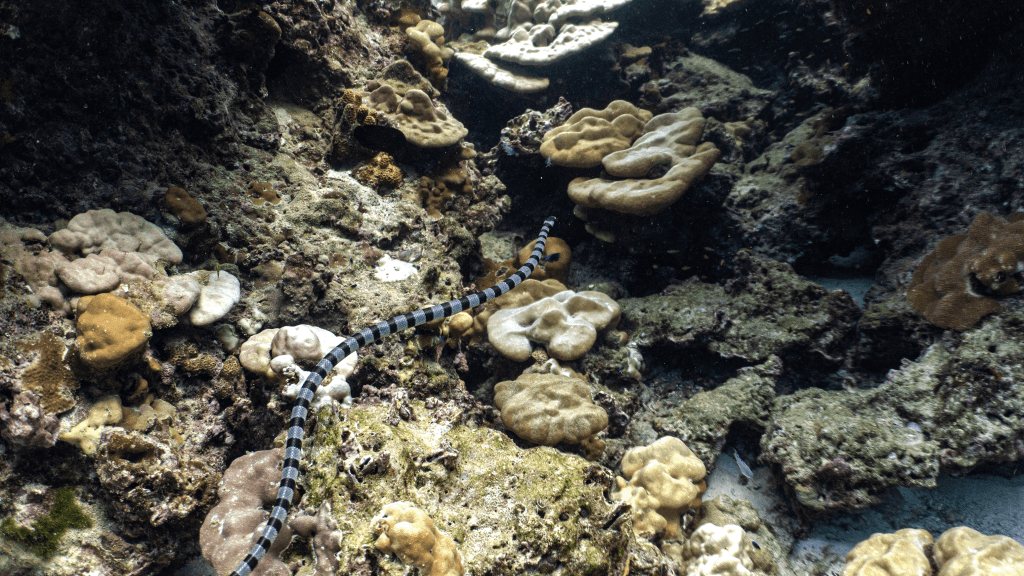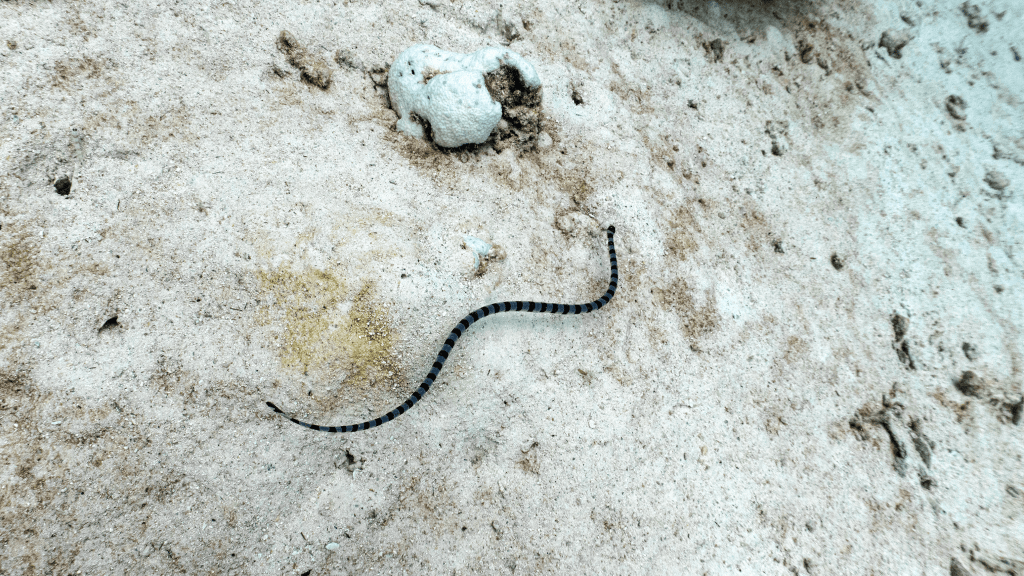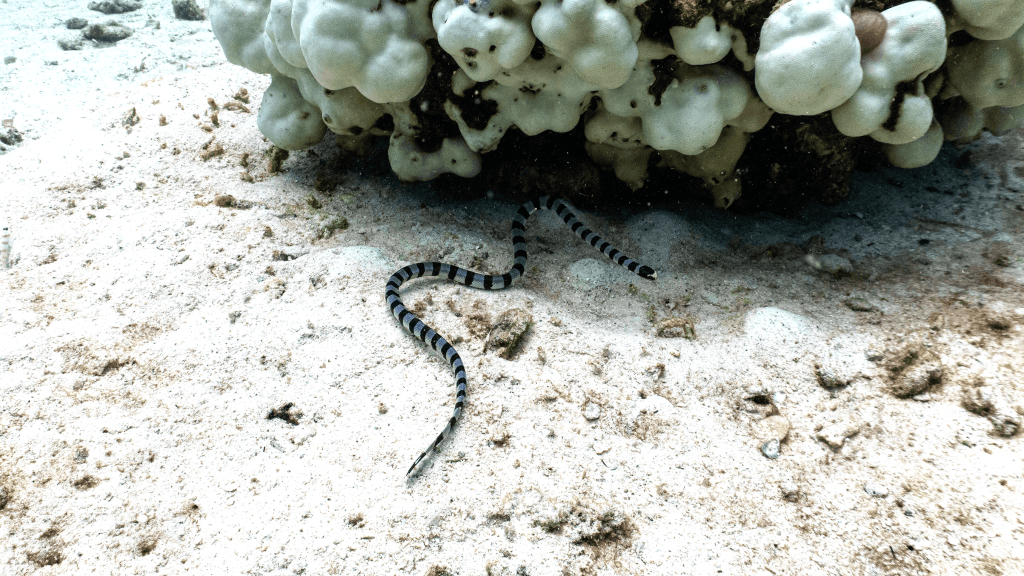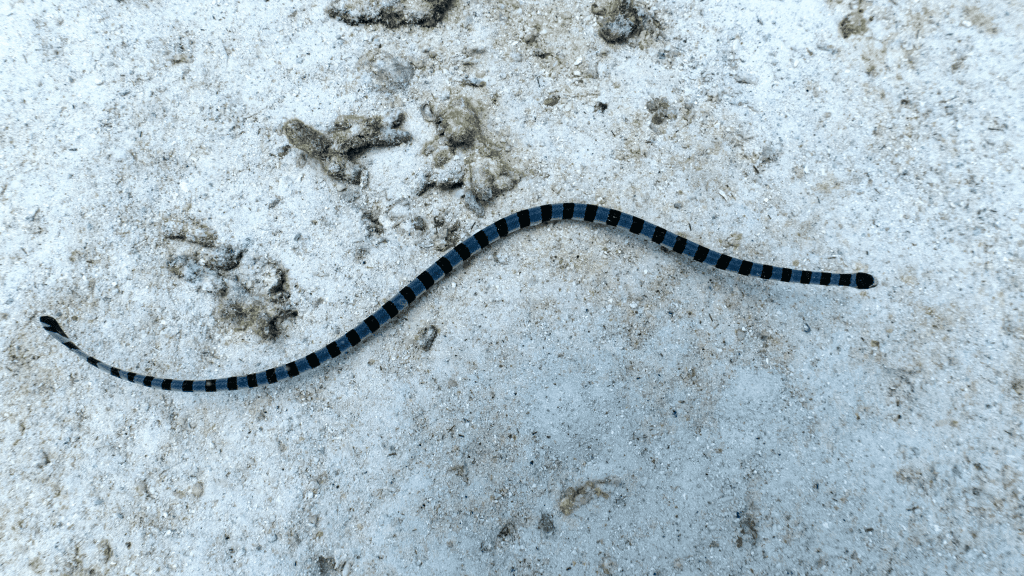Yellow-lipped sea krait

The Yellow-lipped sea krait (Laticauda colubrina), also known as the Banded sea krait or Colubrine sea krait, is a species of venomous sea snake found in the tropical waters of the Indo-Pacific region. The snake has characteristic black bands and a yellow snout, as well as a paddle-shaped tail adapted for swimming.
It spends most of its time underwater hunting but returns to land to digest food, rest, and reproduce. It possesses a highly potent neurotoxic venom, which it uses to hunt eels and small fish. Due to its terrestrial habits, the Yellow-lipped sea krait often encounters humans, but this snake is not aggressive and attacks only when it feels threatened.
The head of the Yellow-lipped sea krait is black, with lateral nostrils and an undivided rostral scale. The upper lip and snout are characteristically yellow, with the color extending backward on each side of the head above the eye to the temporal scales.

The snake's body is taller than it is wide (laterally compressed). The upper surface is typically bluish-gray, while the ventral side is yellowish, with wide ventral scales that cover one-third to more than half the width of the body. The snake's tail is paddle-shaped and adapted for swimming.
The Yellow-lipped sea krait can reach over two meters in length, with females typically growing almost twice as long as males.

The Yellow-lipped sea krait is widely distributed throughout the eastern Indian Ocean and the Western Pacific Ocean. It can be found from the eastern coast of India along the Bay of Bengal coast in Bangladesh, Myanmar, and other parts of Southeast Asia, to the Malayan Archipelago and parts of southern China, Taiwan, and the Ryukyu Islands of Japan. The species is also common near Fiji and other Pacific islands within its range. Vagrant individuals have been recorded in Australia, New Caledonia, and New Zealand. It is the most common sea krait found in New Zealand and the second most common sea snake after the yellow-bellied sea snake, occurring frequently enough to be considered a native species protected under the Wildlife Act 1953.
Yellow-lipped sea kraits are semi-aquatic. Juveniles stay in the water and adjacent coastlines, but adults can move further inland and spend half their time on land and half in the ocean. Adult males are more active on land during mating season and hunt in shallow waters. Adult females, however, are less active on land during mating and hunt in deeper waters. Since males are smaller, they crawl and swim faster than females.

Body adaptations, especially the paddle-shaped tail, help Yellow-lipped sea kraits swim. These adaptations are also found in more distantly related sea snakes (Hydrophiinae) due to convergent evolution, but because of the differences in movement between crawling and swimming, these same adaptations hinder the snake's terrestrial locomotion. On land, the Yellow-lipped sea krait can move, but typically at a speed only slightly more than one-fifth of its swimming speed. Unlike most sea snakes, except for Laticauda species, other sea snakes are practically stranded on land.
While hunting, Yellow-lipped sea kraits often venture into deep waters far from shore but return to land to digest food, shed their skin, and reproduce. Especially...

